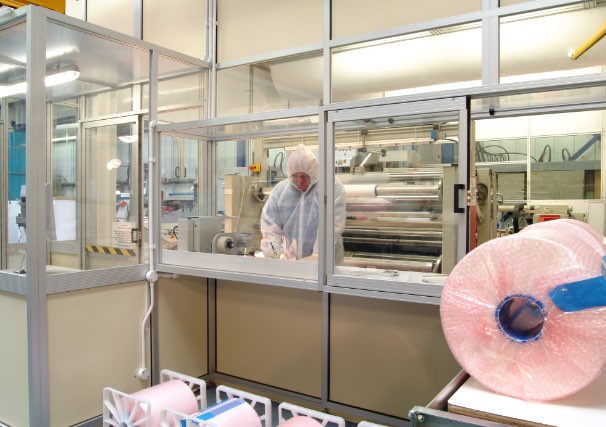PTFE
PTFE (Polytetrafluoroethylene) dalcon™
Fluoropolymers
Fluoropolymers are ideal for pharmaceutical and biopharmaceutical processing equipment because they have excellent chemical and thermal resistance. Their molecules have continuous non-reactive surfaces and are compatible with virtually all chemicals and solvents. They are far more resistant to chemical attack than conventional chlorinated and hydrocarbon polymers, and have far higher service temperatures. There are a number of materials in the Fluoropolymer family. PTFE (Polytetrafluoroethylene) is the original Fluoropolymer, discovered by DuPont in 1938. From this original development there have been a number of other materials developed – trying to improve on the difficult processing characteristics of PTFE. These have been more or less successful, having to trade properties of PTFE in order to attain other characteristics. The principal materials used in the industries that we serve are:
- PTFE
- PEEK
- PCTFE
- PVDF
- PFA
- PVDF
PTFE is not melt-processable and therefore usually needs to be formed into the required shape prior to sintering. PTFE comprises both carbon and fluorine atoms, as a straight chain molecule, the carbon backbone being protected by a helix of the fluorine atoms wrapped around it. This carbon fluorine bond is one of the strongest chemical bonds and gives the material its properties of corrosion resistance and non-stick.
Key Properties of PTFE – Chemically Inert PTFE resists the most aggressive organic and inorganic chemicals and solvents over a broad temperature range. This includes:
- Strong mineral acids
- Inorganic bases
- Inorganic oxidizing agents
- Salt solutions
- Aldehydes
- Chlorocarbons
- Organic Acids
- Anhydrides
- Aromatics
- Alcohols
- Ketones
- Esters
- Fluorocarbons
- Electrical Properties
The ability to resist an electrical charge is measured by surface and volume resistivity. In the case of PTFE these figures are colossal. Depending upon how the test work is performed, values in excess of 1017Ω cm are considered minimum. In the case of equipment lined for the chemical and pharmaceutical industry this property can be a nuisance as PTFE lined equipment may build up electrostatic charges and be unable to dissipate them. This is considered elsewhere in relation to static-dissipating materials.
PTFE has a very low coefficient of friction and for all calculation purposes it can be considered,
- hydraulically smooth,
- Thermal Stability
PTFE retains useful properties (i.e. not more than 15% loss of chemical resistance) at up to 200oC and sometimes beyond depending upon the application. In fact it has the highest retention of its chemical properties of any known plastic like material. (Please be wary of materials performance data stating that PTFE has an upper service limit of 260oC. This is true in a laboratory situation, but in service most material properties such as mechanical strength will have been lost preventing it from performing a useful duty.)

